The world of today’s payments relies on a staggering array of ever-evolving technology to keep turning. I recently caught up with Gareth Lodge, Senior Analyst at Celent, to talk about factors that are impacting the payments landscape and the top trends shaping 2022. Here, I will recap the key topics we covered, including:
- How COVID’s impact has created a ‘new normal now’
- Changes in payments technology investment
- The role of the cloud in the future of payments
- The importance of business data
- Utilizing insights to drive business decisions
Watch the full webinar
Trend 1: COVID and the new normal
"There is no 'normal' anymore; We are in a period of transition." - Gareth Lodge, Celent
The accelerated adoption of digital payments has been phenomenal, with more change globally in the last two years than we’ve seen in the last decade. For example, as reported by Grandview Research, the pandemic has seen a global surge of 41% for real-time payments.
Consumers have forced banks and businesses to change their payment habits, with the massive shift away from cash, and an inexorable move to cloud technology. For the businesses who can navigate this changing landscape with agility there will be plenty of opportunity to thrive.
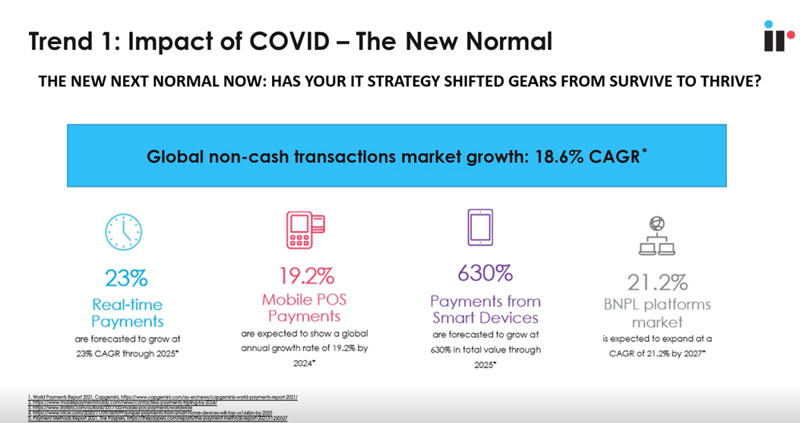
Trend 2: Changes in payment technology investment
Consumers are driving changes in payment technology, forcing banks and businesses to embrace Payments as a Service
Even before the pandemic, 2020 was being hailed as one of the most pivotal years in payments ever. There were already more changes occurring, with more payments systems being introduced in several countries. There was a backlog of things to be done, with changes on the way, for example the migration from SWIFT to ISO20022 messaging systems. Banks were already struggling to meet the deadlines for these global changes.
Spending was put on hold due to uncertainties about the market, and priorities for IT budgets began to head in a different direction. Banks were forced to face the reality that they were not as digitally advanced as the circumstances required.
Now, consumers are demanding more – new payment methods, omni-channel options, more seamless experiences – and this is driving changes in how organizations allocate technology investments.
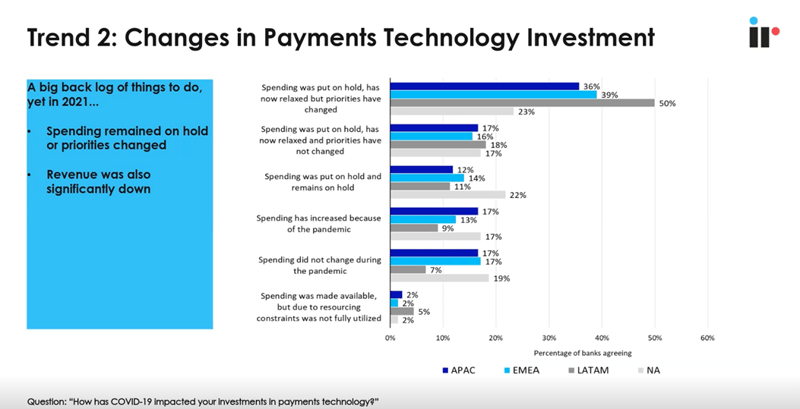
Trend 3: The future of payments and the cloud
“Payments needed to be in the cloud 12 years ago…and here we are still on the cusp of it." - Gareth Lodge, Celent
One of the biggest issues facing the payments industry is the journey towards cloud migration.
Payments processors and issuing banks must ensure they are technology-enabled and software-driven so that the financial products and services they provide are future-proofed – ready for today and tomorrow. A main concern for financial institutions, businesses and consumers on their cloud journeys is security.
They’re faced with the questions ‘Which cloud, whose cloud, and what cloud?’ Should they opt for managed services and move operations to a public cloud? Or adopt a private cloud solution where control remains in their own hands? Or should they use a hybrid combination to meet their needs?
While we are in a transition period, banks and financial institutions in every region globally believe that payments operations will be fully migrated to the cloud in 5 years. So, these are questions that must be considered now.
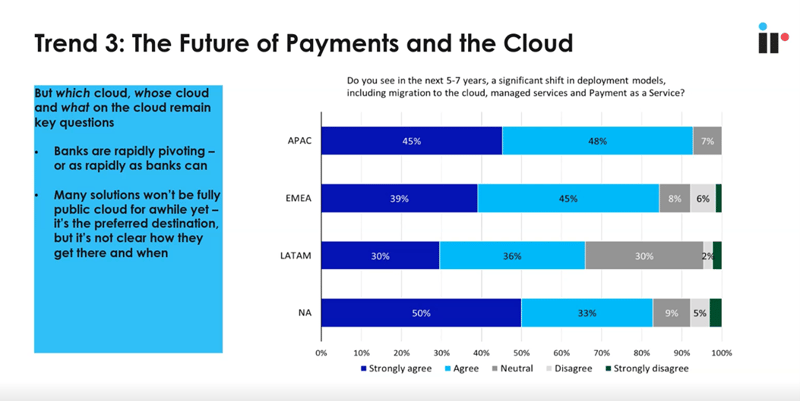
Trend 4: The need for business data
“The information about a payment is as important as the payment itself.” - Gareth Lodge, Celent
Payments data is important because it identifies trends and patterns which can shape future business decisions. It allows businesses to operate in real time and can uncover actionable insights that can increase revenue and improve ROI.
The biggest obstacle for banks has always been the difficulty of accessing the right data in real time, due to disparity, lack of transparency, and speed. The movement to ISO 20022 across the global financial messaging space will alleviate many of these challenges by creating a common language.
The massive adoption of ISO 20022 gives organizations the ability to access and analyze the date, not only in a message, but the ability to look across all the messages in a single data set and create analytical value from it.
Data insight is the key to simplifying payments complexity, and can help businesses to facilitate better business decisions, provide a great customer experience and keep downtime and outages to an absolute minimum.
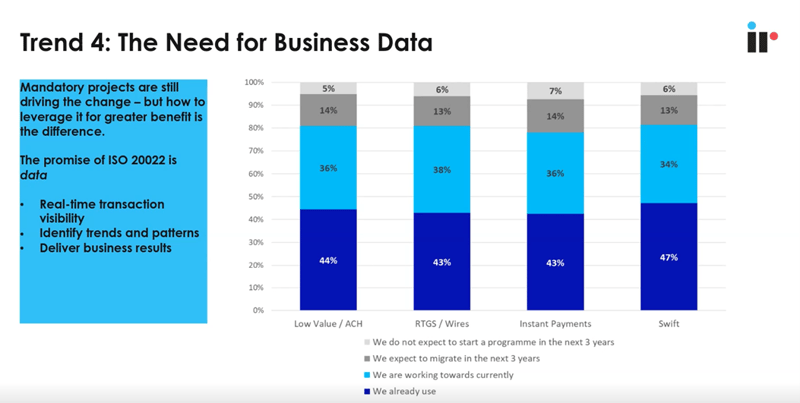
Trend 5: Utilizing insights to drive business decisions
“Corporates want more [actionable] data – and they’re willing to pay for it." - Gareth Lodge, Celent
With the implementation of new technologies and standards, there are infinitely more sources of data available, making it increasingly more difficult to collate it all. Corporates are realizing the value of data and analytics tools to collect, monitor, analyze and reconcile payments to increase revenue opportunities and make operations more streamlined.
There are several key considerations corporates look for in the capabilities of these tools. Depending on individual business needs, they include:
- Adaptability and customizability to create seamless integration into corporate workflows.
- Incorporating and consolidating data from multiple banks into a single, clear dashboard.
- Greater automation. o Custom reporting for internal and/or regulatory purposes.
- Real time cash balances.
- Incorporating several payment types.
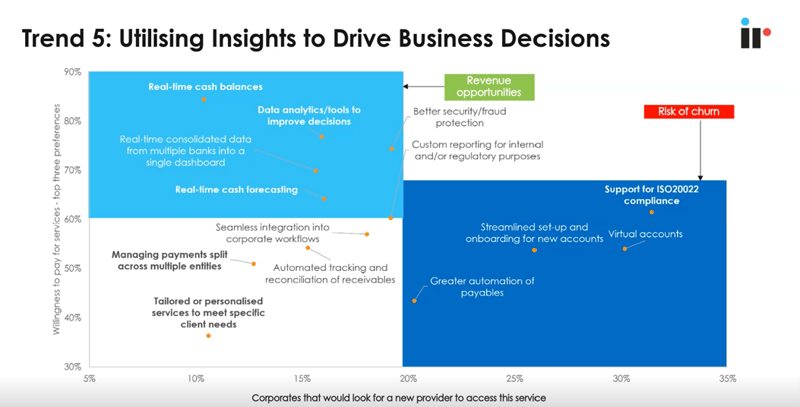
Data, insight, and visibility
Businesses need optimal flexibility and adaptability. Customers want seamless options and experiences. For both performance and availability issues impede success.
Being able to easily see every level of your payments ecosystem, in real time, provides layers of intelligence and insights that enable cost management, innovation, great experiences, and growth.
While every organization is different, the principles for success remain the same. By keeping these key trends top of mind, you can develop the right strategies to optimize your payments environments and overcome challenges to ensure success now and well into the future.



